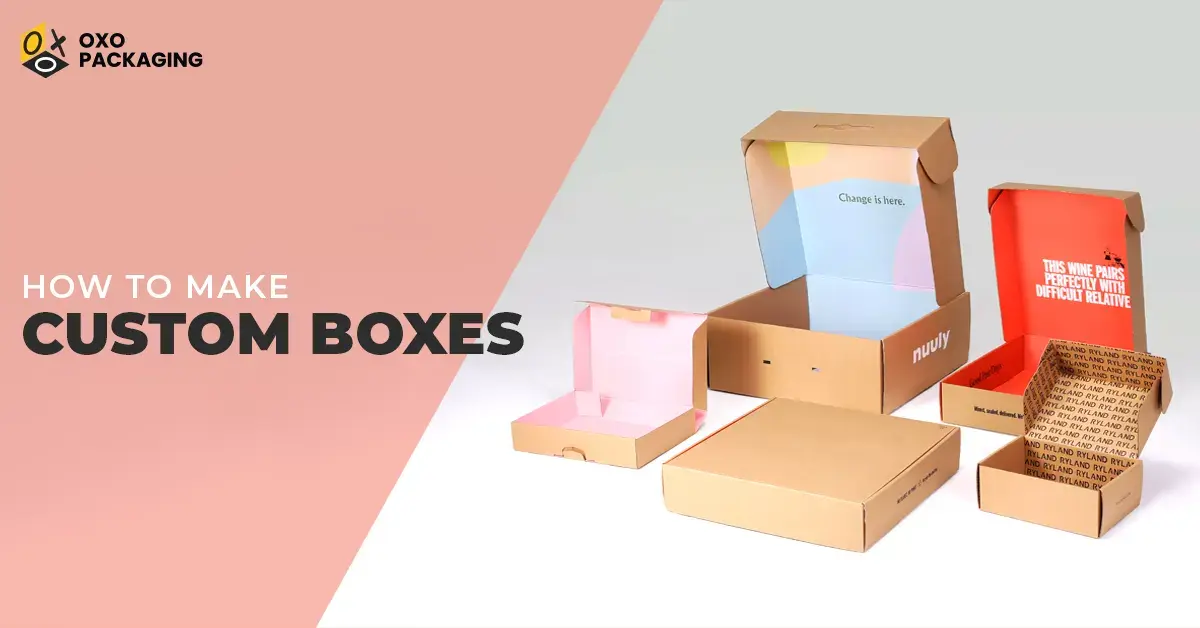How to Make Custom Box - A Deep Dive into the Process

You often feel confused when buying custom packaging for your products, Right?
The main reason is that you don't know how your packaging manufacturer will operate, or that there are a lot of packaging suppliers available on the market. So, choosing the right one for your brand's needs might be difficult. Additionally, selecting the appropriate packaging type, such as display packaging for showcasing your products effectively, can add to the challenge. Don't worry; we are here to help. This blog post will tell you how to make a custom box for your products
We will be explaining the process in detail. After reading this article, you will understand how your packaging manufacturer makes your custom boxes. And how you can make it on your own.
So, let's delve into the complex yet amazing world of custom packaging.
How to Make A Custom Box - The Complete Journey
The first step in learning how to make a custom box is understanding what a custom box is.
A custom box is a packaging solution specially created to fit the product specifications and branding guidelines. These boxes can have your desired graphics, colors, and other branding elements to make your product stand out.
In contrast, a traditional box is a packaging solution that lacks these latest customization features. These boxes are just simple cardboard containers ideal for carrying out shipping boxes, but you cannot fulfill your branding needs with these boxes.
Now that you have the idea of a custom box, let's start learning about its making process:
1. Understanding the Brand’s Vision
At OXO Packaging, the journey to make a custom box begins with a comprehensive understanding of your brand’s vision. We will initiate the process with thorough consultations with your brand’s representative.
This involves a discussion about the following crucial factor:
- Your target audience,
- product specifications,
- design preferences,
- and any unique elements that you need in the packaging.
2. The Design Phase
The next step is the design phase, where we bring your packaging ideas to life. Whether you're envisioning elegant mailer boxes, practical gable boxes, or stylish pillow boxes, our design team will collaborate with you to draft a tailored sketch. We will explore various shapes, sizes, colors, materials, and graphics that perfectly align with your brand's identity.
In addition, we leverage modern technological advancements like computer-aided design (CAD) software and three-dimensional modeling. These tools enable us to create detailed digital prototypes, ensuring precision for mailer boxes, gable boxes, and pillow boxes alike.
We will share these prototypes with you for feedback. Based on your input, we make the necessary adjustments to finalize a design that captures the essence of your brand
3. Material Selection
A crucial step in creating custom packaging is choosing the materials. We consider various factors like sustainability, product type, and budget when choosing the appropriate materials. Our packaging materials are eco-friendly, durable, and visually appealing.
These materials include:
- Corrugated board
- Corrugated
- Kraft Paper
- Specialized materials like bioplastics
In this step, we will explain how to make custom shipping boxes. Whether you want a custom box for shipping or a plain cardboard box, we have you covered.
4. Printing Techniques
Printing is where the brand's story truly comes to life on the custom box. We employ a variety of printing techniques to achieve the desired aesthetic. These techniques include:
- offset printing,
- flexography,
- and digital printing.
We can use specialized options like embossing, debossing, foiling, and spot UV coatings to make your boxes more appealing and enchanting. The choice of printing method depends on factors such as color complexity (CMYK or PMS), the number of boxes, and budget.
Read More: What is CMYK and Why is it Used for Printing?
5. Structural Engineering
The engineering of the custom box's structure is a delicate process. We can customize your product’s packaging in any shape, size, or color. Moreover, this step will let you know how to make a custom size box. So you can better understand what size of boxes will align with your product’s dimensions.
We carefully consider factors such as:
- load-bearing capacity,
- opening mechanisms,
- ease of assembly,
- and ergonomics.
Our engineers create prototypes to protect your products during storage and shipping processes and subject them to different tests. If the box passes these tests, we will include it in the next stage of making the custom packaging.
6. Prototyping and Mockups
We create prototypes and mockups before proceeding to full-scale production. Then we send it to our clients so they can interact with their product’s packaging before buying it. This step gives them a better understanding of the final product's dimensions and appearance.
7. Production and Quality Control
The custom box enters the production stage after the design has been completed and prototypes have been approved. In this product stage, our skilled artisans and the latest machinery work together to make your dream product’s packaging.
We employ quality control processes at various stages to ensure that every box meets the brand's consistency, durability, and aesthetic standards.
Read more on Design Rush
8. Customization and Personalization
In the past, packaging was primarily seen as a functional necessity. It was used to protect products during shipping and handling and to provide information about the product to consumers. However, in recent years, packaging has become increasingly important for brands to tell their stories and connect with consumers on an emotional level.
We can customize the box with your branding elements for marketing and customer engagement. Our variable data printing allows us to customize your box with personalized messages, images, logos, and even QR codes. These features will lead to your product's and brand’s promotions.
In addition, this level of customization enhances brand-consumer relationships and creates memorable unboxing experiences.
Note that this step is entirely based on your budget and needs. It is not mandatory. Here we can also explain you how to make custom gift box for your products. So that you can tell us the necessary information to build delightful gift packaging.
9. Logistics and Distribution
This is the final stage, where your product’s packaging is delivered to your door. We collaborate with logistics partners to ensure efficient and secure distribution. We consider the following factors to ensure that your boxes are delivered in the best possible manner:
- stackability,
- space optimization,
- and protection against damage during transit.
You can expect a delivery time of 12-15 days with us. The final customized packaging that you receive is worth the wait!
Moreover, our clients from the United States can enjoy free shipping services on all orders. The process isn’t concluded when your custom boxes have been shipped.
Our process ends with your satisfaction. Once you receive the order, we ask for feedback. If you are satisfied with the order, only then is the order complete.
How to Make a DIY Custom Box - A Step-By-Step Guide
You can always get your product’s packaging from a packaging supplier. But creating your own custom packaging boxes can be a fun and rewarding project.
Want to know how?
Here's a step-by-step guide on how to make your custom packaging boxes:
-
Determine Your Goals
What do you want to achieve with your custom boxes? Do you want to protect your products during shipping?
Do you want to create a unique and memorable unboxing experience for your customers? Do you want to use your boxes as a marketing tool to promote your brand?
Once you know your goals, you can develop a design to help you achieve them.
-
Design and Planning:
Determine the size and dimensions of your packaging box based on the product you intend to package.
Sketch or use graphic design software to design your packaging box. Include your logo, branding elements, product images, and other relevant information.
-
Materials and Tools:
Gather the necessary materials: cardboard or corrugated sheets, cutting tools (scissors, utility knife, or box cutter), ruler, pencil, adhesive (glue or tape), and any decorative elements (such as stickers or ribbons).
-
Choose Your Cardboard:
Select the type and thickness of cardboard based on the weight and fragility of your product. Corrugated cardboard is a popular choice for its durability.
-
Creating a Template:
Create a template for your packaging box. You can find box templates online or design your own. The template should include measurements for all sides of the box.
-
Cutting the Cardboard:
Using the template, trace the outline onto the cardboard sheets. Carefully cut out the cardboard pieces using a utility knife or scissors. Make sure your cuts are precise and clean.
It is better to read a guide on how to customize a cardboard box before moving forward to the next step. As cardboard has different thicknesses, it is better to know the right thickness to pack your product.
-
Scoring and Folding:
Scoring along the fold lines using a ruler. Scoring makes it easier to fold the cardboard neatly. Carefully fold along the scored lines to create the basic structure of the box.
-
Assembling the Box:
Apply adhesive (glue or tape) to the flaps and edges of the cardboard pieces. Assemble the box by attaching the flaps to the corresponding sides. Press firmly to ensure a secure bond.
-
Decorating and Branding:
Apply your design and branding elements to the box's exterior. This includes your logo, company name, product information, and decorative features.
-
Finishing Touches:
Check for uneven edges or loose flaps, and make the necessary adjustments. Add decorative elements like stickers, ribbons, or stamps to enhance the box's appearance.
-
Quality Control:
Inspect the assembled box for structural or design flaws. Test the box with your product to ensure it fits securely and provides adequate protection.
-
Mass Production (Optional):
Once satisfied with your prototype, you can replicate the process to create multiple custom product packaging boxes. Remember, practice makes perfect. Creating custom packaging boxes might take a few tries, so be encouraged if your first attempts are imperfect.
With time and experience, you can create professional-looking custom packaging boxes for your products.
Get Your Custom Boxes Now!!
In an era where the packaging has transcended its functional role and become a canvas for brand storytelling, OXO Packaging is helping brands stand out in a crowded marketplace. Whether you want pillow packaging boxes or any other kind of custom packaging for your products or a consultation on how to make a custom box, we are here to help. Just call us, and we will solve your queries in seconds!




